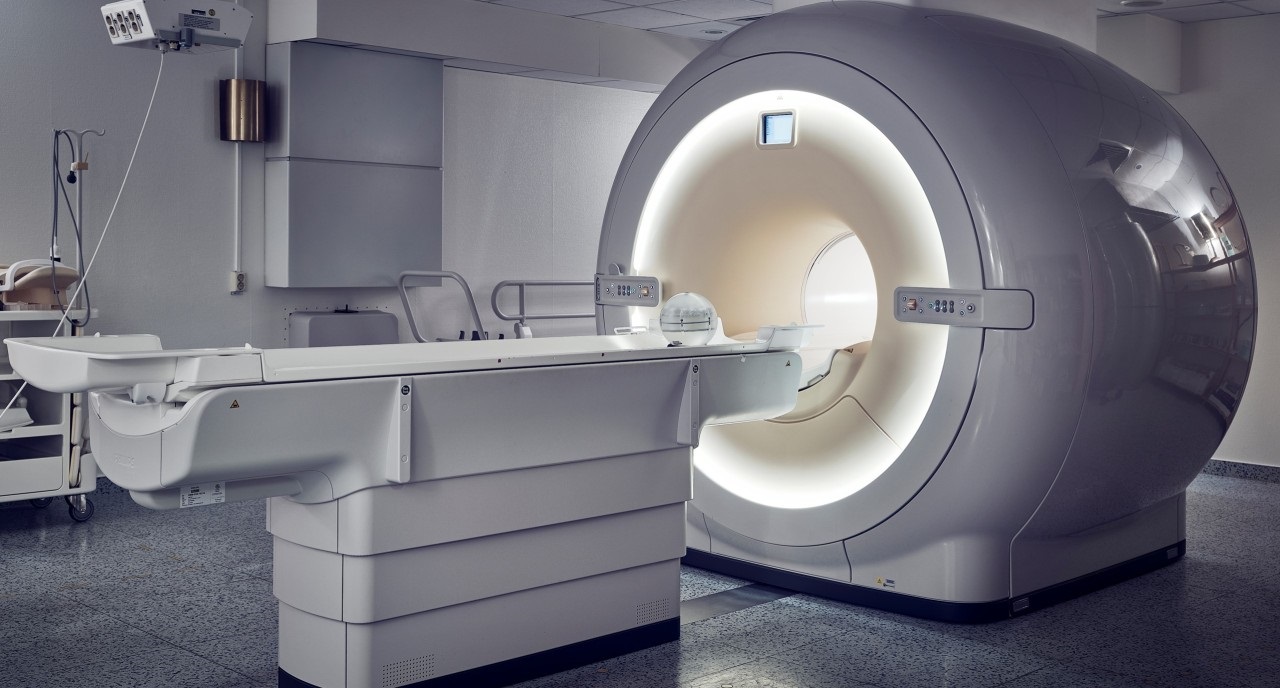United States magnetic resonance imaging (MRI) systems market is projected to witness a CAGR of 5.38% during the forecast period 2024-2031, growing from USD 1.83 billion in 2023 to USD 2.78 billion in 2031.
The MRI systems market is expected to dominate in the United States mainly because of its fast-paced development and innovation-friendly healthcare infrastructure. Innovation in the MRI systems market has accelerated in the United States as well as globally due to advancements in MRI technologies. New advancements in image quality and diagnostic precision include multi-parametric imaging, higher-field MRI scanners, and AI-driven image analysis. In addition, new avenues for studying brain function and connectivity have been made possible by the combination of diffusion tensor imaging (DTI) and functional magnetic resonance imaging (fMRI), which has improved neurological disease diagnosis and treatment. Thus, the rising geriatric population, which is more prone to developing neurological disorders coupled with advancements in DTI and fMRI technologies, is expected further to fuel the growth of MRI systems in the market.
Furthermore, advancements in portable and compact MRI systems have improved the access and availability of these systems in remote areas. Global leaders, such as Fujifilm Holdings Corporation, and emerging market players, such as Hyperfine, Inc., and neuro42, Inc., continuously focus on developing compact MRI systems. Thus, technological advancements and new product launches will accelerate the growth of the United States MRI systems market. For instance, in February 2024, neuro42, Inc. received US FDA 510(k) clearance for its portable diagnostic MRI scanner for neuroimaging applications. The company is planning to launch this system in the US market during year 2024.
Rising Awareness About MRIs Drive Market Growth
The magnetic resonance imaging (MRI) systems market in the United States is expanding due to the growing installation of MRI machines. Healthcare facilities are heavily investing in MRI technology as demand for advanced diagnostic imaging is rising due to an aging population, an increase in chronic diseases, and the need for accurate and timely diagnosis. The upgraded features of contemporary MRI machines, such as faster scanning periods and higher resolution images, are drawing medical facilities and diagnostic centers to replace their outdated technology. These developments make MRI services more widely available and reasonably priced, treating a wider spectrum of illnesses and enhancing patient outcomes. In addition, the MRI systems market is expanding due to rising demand for non-invasive diagnostic methods and growing knowledge of the advantages of MRI in early disease diagnosis. For example, a study conducted in April 2023 and published in the Multidisciplinary Digital Publishing Institute (MDPI) journal by researchers at the University of Southern California found that delays were observed in many imaging modalities in the outpatient setting, with the modalities of mammography, MRI, and CT showing the largest decreases with over 12,000 imaging delays. Due to the sharp decline in MRI services, the COVID-19 pandemic thus had a major effect on the market and has only flourished ever since then.
Rising Geriatric Population Boosts Market Growth
One major factor propelling the growth of the MRI systems market in the United States is the aging population. The prevalence of age-related health concerns, including neurological illnesses, joint problems, and cardiovascular conditions, is rising along with the elderly population. With its comprehensive and non-invasive imaging capabilities, MRI technology is a vital tool in the diagnosis and treatment of many intricate disorders. Since they are more likely to have chronic illnesses and need ongoing care, older persons are more likely to need frequent diagnostic imaging. Thus, in turn, the aging population is driving an increased demand for advanced diagnostic instruments, which is driving the growth of the MRI systems market in the United States. The population share of the United States, which constitutes people aged 65 and above, is projected to rise from 17% in 2022 to 23% by 2050. Moreover, the number of people aged 65 and above is expected to rise from 50 million in 2022 to 82 million in 2050, showcasing a hike of 47%.
Dominance of High Field Strength MRI Segment in the United State MRI Systems Market
The magnetic resonance imaging (MRI) systems market in the United States is expanding at a substantial rate due to the introduction of high-field strength (HF) and ultra-high field strength (UH) MRI systems. Compared to conventional 1.5T MRI machines, HF MRI systems, which commonly operate at 3 Tesla (T), and UH MRI systems, which operate at 7T and beyond, offer improved imaging capabilities. These cutting-edge devices enable earlier and more accurate diagnosis of a variety of illnesses by improving image contrast, resolution, and detail. Since high-field strength MRI systems can record fine anatomical and physiological features, which are essential for diagnosing complicated neurological, musculoskeletal, and cardiovascular problems, they are gaining increasing traction and widespread adoption. For instance, in March 2024, Siemens Healthineers AG announced the launch of MAGNETOM Terra.X. This second-generation clinical 7-tesla magnetic resonance imaging scanner significantly improves 7T MR scanning capabilities with new hardware and XA60A software, which has also received FDA certification. The MAGNETOM Terra, which made its debut in 2017 as the first 7T clinical MR scanner in the world and allowed incredibly high-resolution imaging, is now replaced by the MAGNETOM Terra.X.
Neurology Segment Dominates United States Magnetic Resonance Imaging (MRI) Systems Market
MRI systems are utilized to obtain fine-grained images of the bones, organs, tissues, and nerves in the body. MRI is used to diagnose several conditions, including stroke, traumatic brain injury, brain and spinal cord tumors, inflammation, infection, vascular abnormalities, brain damage connected to epilepsy, abnormally formed brain regions, and other neurodegenerative illnesses. Due to the growing use of MRI imaging in the diagnosis of neurological diseases and the development of sophisticated MRI equipment for neurology, the neurology segment of the market is anticipated to rise significantly. Additionally, it is anticipated that the rise in neurological conditions like dementia and Alzheimer’s disease will increase demand for MRI machines in the US, which will support the market’s expansion throughout the projected period. For instance, the Alzheimer’s Disease Facts and Figures study estimated that 6.7 million Americans, 65 years of age and older, were diagnosed with Alzheimer’s dementia in 2023. Furthermore, it is anticipated that by 2050, 12.7 million of the population would be suffering from dementia in the United States.
Future Market Scenario (2024-2031F)
The main factors contributing to the anticipated growth of the United States magnetic resonance imaging (MRI) systems market are the rising numbers of chronic ailments, the increasing prevalence of diseases, and thus, the rising requirement to conduct diagnostic tests. However, the growing need to have precision medicine to maintain a healthy population is also going to fuel the MRI Systems market growth in the future. Given that technology is advancing, cutting-edge technology in the area is expected. Players in this market are expanding at an unparalleled rate, introducing cost-effective and efficient technologies. For instance, in October 2023, Koninklijke Philips N.V. announced its collaboration with Quibim to introduce advanced AI-driven imaging software aimed at prostate cancer detection. By combining Philips’ innovative AI-enhanced MR imaging software with Quibim’s AI-powered image analysis software, healthcare providers can expedite and simplify prostate cancer diagnosis and care.
Report Scope
“United States Magnetic Resonance Imaging (MRI) Systems Market Assessment, Opportunities and Forecast, 2017-2031F”, is a comprehensive report by Markets and Data, providing in-depth analysis and qualitative and quantitative assessment of the current state of United States magnetic resonance imaging (MRI) systems market, industry dynamics, and challenges. The report includes market size, segmental shares, growth trends, opportunities, and forecast between 2024 and 2031. Additionally, the report profiles the leading players in the industry, mentioning their respective market share, business models, competitive intelligence, etc.
Click Here: https://www.marketsandata.com/industry-reports/united-states-magnetic-resonance-imaging-systems-market
About Us:
Markets and Data provides a comprehensive/ panoramic understanding of markets at global, regional, and country levels. Examine changing consumer preferences, emerging challenges, underlying trends, and growth prospects to accelerate your business strategies.
Contact
Mr. Vivek Gupta
5741 Cleveland street,
Suite 120, VA beach, VA, USA 23462
Tel: +1 (757) 343-3258
Email: [email protected]
Website: https://www.marketsandata.com




